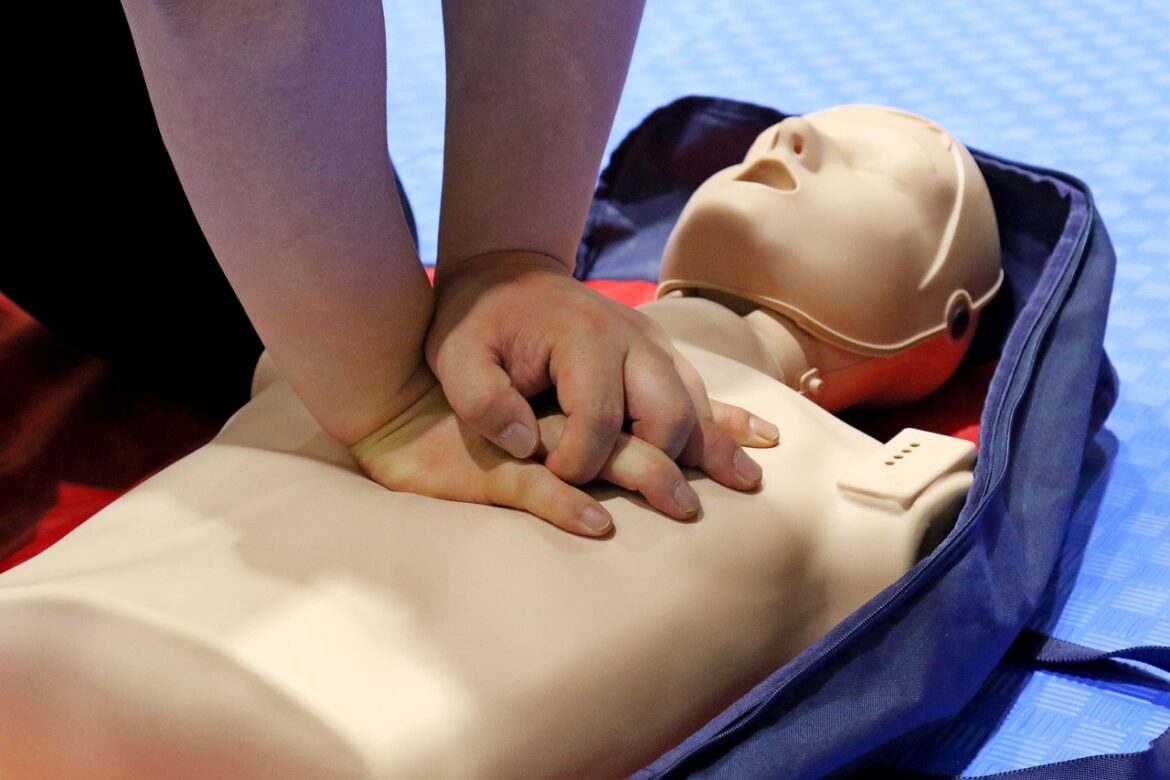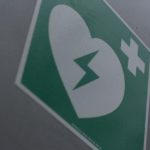Whether you’re an employee, healthcare professional, or just an average citizen, having life-saving skills can make a difference in saving a person’s life. Fortunately, you can get trained in these essential techniques by taking BLS classes.
NTX CPR is a dynamic vocational school that delivers healthcare certification programs, including CPR and first aid training. With a curriculum crafted by industry experts and robust training equipment, this institution is dedicated to student success.
Basic Life Support (BLS)
BLS is a course that teaches participants how to respond to medical emergencies and save lives. It includes cardiopulmonary resuscitation (CPR) and emergency rescue breathing as well as other vital emergency care steps such as using tourniquets, removing foreign objects from the airway, or performing chest compressions. BLS also addresses issues that may contribute to the emergency such as bleeding and shock. It provides the critical first response necessary to buy time until advanced medical help arrives.
A significant percentage of people who suffer cardiac arrest die because they do not receive assistance from bystanders. This is because many bystanders are not confident enough to perform CPR or do not know what to do in an emergency. By providing BLS training, healthcare professionals can empower their colleagues and the public to take action in the event of a medical emergency or accident.
In addition to reducing the number of bystanders who are reluctant to intervene in an emergency, BLS training can improve outcomes for patients who suffer from cardiac arrest. Studies have shown that individuals who receive BLS training and practice regularly are more likely to be able to follow the correct resuscitation algorithm, which increases the likelihood of a positive outcome.
BLS training can also help increase confidence levels for healthcare providers. This translates into better job performance and a sense of self-assurance when they face life-threatening situations. It can even help them become more effective leaders within the hospital and promote a culture of safety.
BLS skills are versatile and adaptable to different situations, making them ideal for use in almost any setting. They can be used to respond to an adult who is suffering a heart attack, a child who is choking on a toy or object, or any other emergency situation. This versatility and flexibility is why BLS training is so valuable, and it’s why healthcare professionals who are not already certified in BLS should consider taking a BLS class. BLS certification is usually valid for a period of two years, and it requires regular renewal to ensure that participants are up to date on the latest emergency treatment guidelines.
Cardiopulmonary Resuscitation (CPR)
Cardiopulmonary resuscitation, or CPR, is an emergency first aid procedure that can help save a life during cardiac arrest. It pumps blood through the heart and brain to deliver oxygen while waiting for professional medical help to arrive. While CPR isn’t guaranteed to revive someone who has suffered a sudden cardiac arrest, it increases the chances of survival by up to 40%. It’s important that more people be trained in CPR because it puts more victims within reach of life-saving intervention.
CPR can be difficult to perform in an unfamiliar environment, especially if you don’t understand the full scope of the process. This can cause many people to delay responding or fail to act, which is why proper training is essential. A CPR class will teach you the steps of performing CPR, including how to identify signs of cardiac arrest and respiratory distress. This will ensure that you respond quickly to a medical emergency, giving the victim a greater chance of survival.
In addition, a CPR training course will also teach you about the “chain of survival,” a series of steps that should be taken in order to provide an individual with the best chance of surviving cardiac arrest. This starts with immediate recognition of the incident, followed by activation of the emergency response system by calling 911 (check to see if your community’s plan requires dialing a different number) and performing early CPR until first responders arrive.
Another important aspect of a CPR class is learning how to properly use a public access defibrillator. These devices are available in a variety of places, including schools, churches, and gyms. They’re designed to be easy to operate and are an invaluable resource for anyone who might witness a cardiac emergency.
You’ll also learn how to do hands-only CPR, which doesn’t require mouth-to-mouth breathing and can be performed by a bystander. This form of CPR is recommended for adults who have collapsed in the workplace or public places and has been shown to be just as effective as traditional CPR. Hands-only CPR is an ideal option for those who are nervous about performing mouth-to-mouth resuscitation or don’t want to waste time while waiting for professional help to arrive.
Automated External Defibrillator (AED)
When a person suffers sudden cardiac arrest, the time to defibrillate is critical. For every minute that passes without treatment, the chance of resuscitation drops by 10%. That’s why the chain of survival includes early access to 911, early CPR, and early defibrillator. In the 1970s, portable defibrillators became available that enabled bystanders to perform defibrillation even before emergency medical services arrived. In the early days of these devices, training was required to use them, but new technologies have made AEDs easy enough for anyone to use.
Today, a person who collapses with suspected cardiac arrest can simply walk over to an AED, turn it on, and follow the simple voice instructions to check for breathing and a pulse. If the device determines a life-threatening rhythm is present (ventricular fibrillation or unstable ventricular tachycardia), it will instruct the user to place electrode pads on the victim’s bare chest. The device then analyzes the heart rhythm to see if a shock is needed, and if it is, the device will deliver the shock in a matter of seconds.
AEDs create little liability if used correctly and have been proven to save lives. Almost all NREMT-B and many state Emergency Medical Technician (EMT) training classes and CPR classes include AED education. In addition, many organizations and communities have implemented AED programs, placing devices in locations that are likely to be visited by people who may experience a medical emergency. Some regions also have laws known as Good Samaritan laws that protect individuals who attempt to assist with a medical crisis from criminal repercussions.
In a study of AEDs, researchers found that the number of people who survived cardiac arrest increased significantly when they were first shocked by bystanders using AEDs instead of waiting for emergency medical services to arrive. This research, published in the journal Circulation, analyzed data from the OPALS (Out-of-Hospital Prehospital Cardiac Arrest System) network and six other U.S. and Canadian sites that provide public access to AEDs. The OPALS team searched MEDLINE, EMBASE, and EconLit to identify studies that reported the outcomes of an AED program in out-of-hospital settings.
For individuals residing in Albury and its surrounding areas, NTX CPR offers comprehensive training programs, including CPR and first aid Albury courses, ensuring that residents are equipped with the necessary skills to respond effectively to medical emergencies.
Advanced Cardiac Life Support (ACLS)
ACLS takes basic life support training to the next level, teaching healthcare professionals how to respond to medical emergencies involving cardiac arrest. Healthcare providers with ACLS certification are able to respond to adult patients in need of cardiopulmonary resuscitation and advanced interventions for life-threatening conditions like cardiac dysrhythmia, stroke, and acute coronary syndromes. These skills are critical in ensuring that patients receive the care they need before they can be transferred to a hospital for treatment.
Unlike BLS, which teaches only fundamental life-saving techniques and can be performed by emergency medical technicians, paramedics, or qualified bystanders, ACLS requires knowledge of more advanced life-saving interventions and clinical judgment in treating patients with life-threatening conditions. This is why it’s important for those who are pursuing ACLS certification to find an emergency medical training provider that offers a combination of classroom instruction and hands-on practical experience. A reputable provider should also offer convenient access to course preparation materials, practice quizzes, and ACLS algorithms on its website.
The American Heart Association recommends that healthcare providers undergo ACLS training once every two years to maintain proficiency in the skills and procedures taught in the course. The ACLS curriculum includes a practical exam involving scenarios replicating real medical emergencies and demonstrating skills on a medical mannequin. This practical exam is evaluated based on communication skills, physical demonstrations, and adherence to ACLS algorithms. Depending on the duration of the course, recertification can be completed in a single day by reviewing and reinforcing key concepts.
Aside from the practical aspect of ACLS, the theory behind the training is to teach students how to recognize and treat life-threatening conditions. This is achieved by learning about the underlying causes and interventions for common disorders such as cardiac arrest, ventricular fibrillation, and tachycardia while also understanding how to perform high-quality cardiopulmonary resuscitation (CPR) and use an AED.
While research has shown that ACLS increases ROSC and survival to hospital discharge, it doesn’t necessarily lead to superior neurological outcomes compared with non-ACLS-treated patients. Nevertheless, the skills gained in ACLS training are a necessary part of a healthcare professional’s job. Moreover, the ability to respond quickly and efficiently in an emergency can make all the difference for a patient’s chances of recovery.
Related Posts












